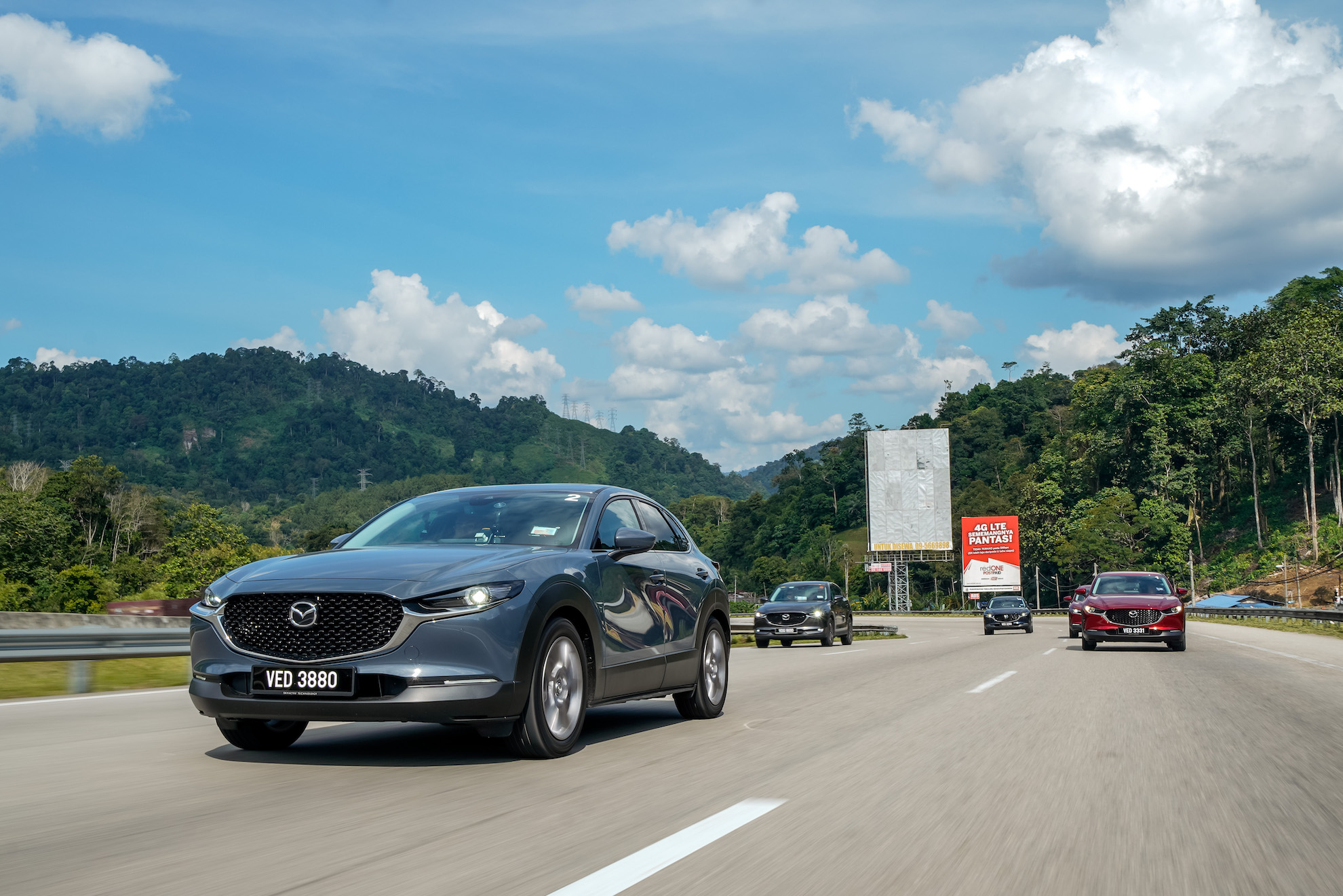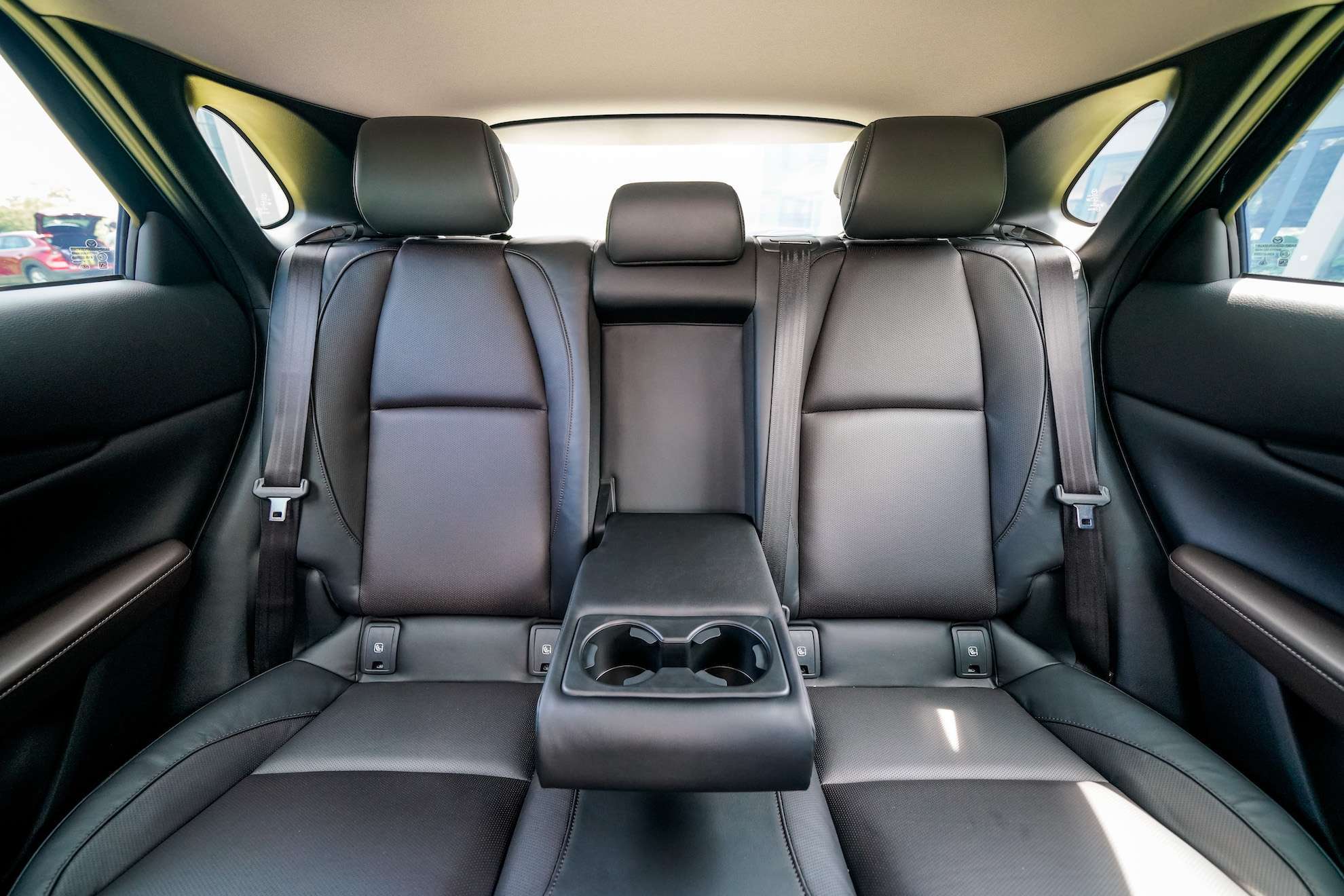Here’s the bottom line: Unless you’re particular about how far you can drive with a full tank of fuel, then it’s best to pass up the diesel-powered CX-30 and head straight for the petrol-engined version instead.
Remembering how good the 2.2-litre diesel found in the CX-5 has constructed enormous expectations for the new and smaller 1.8-litre diesel engine. Although it generates 270Nm, the CX-30 doesn’t quite have the same fire-cracking acceleration of the CX-5. It is not I am excepting equal levels of performance — I am aware that the new engine has a smaller capacity — yet the drivetrain underwhelming.

Instead of a thrilling rush forward, the CX-30’s acceleration so linear that you can actually visualise where the SUV is on the torque curve and how gentle the climb is. Never doubt for a moment the smoothness of this diesel engine. If I was kept blindfolded, ushered in and be driven around town, I would have thought that this was the petrol-fulled twin.
It is a known fact that diesel engines, no matter how much torque they produce, doesn’t carry plenty of horses in its stable. The same is true for the 1.8-litre Skyactiv-D that can only manage a paltry 114hp at 4,000rpm. Having said that, this CX-30 will get you up to speed reasonably quick but going any faster from there on is a challenge.

The tradeoff for having less power is greater range. Although my short stint in the crossover didn’t exploit the CX-30’s range to its fullest, the spec sheet shows a fuel economy of 4.9 litres per 100km. Which, when extracted from a 51-litre tank, would yield approximately 1,000km… I think.
Where the diesel-engined CX-30 starts losing breath, the petrol-fuelled CX-30 continues to keep pace. Generating 162hp and 213Nm, the power surges through a six-speed automatic to reach the front wheels. And there’s plenty left in the tank — the evidence surfaces when you accelerate and overtake at speed.

The additional punch you get from the Skyactiv-G makes the CX-30 very drivable across the range. The rising engine tone that matches with the soaring numbers of the speedometer peppers some much excitement and satisfaction to a refined acceleration.
This refinement isn’t just confined to the engines but cut across to the ride and handling. Most drivers will enjoy the keen steering and the crossover’s eagerness to slice through corners. Slight body roll shows itself in tighter turns, but firm grip keeps the crossover on track. If you’ve driven the Mazda3, then you know this agility isn’t at all surprising.

Inside, the Mazda CX-30 has all the trappings of a brand that has moved up the value ladder. The quality of the materials is top-notch and feels more expensive than the crossover’s listed price. Interior space is adequate, especially in the rear, and certainly enough for a comfortable ride. That is until a tall person sits in front of an equally tall person.
Let’s not forget that the CX-30 comes with the entire i-Activsense menu, albeit only the high spec CX-30 has them all. Still, it is something that you want to fork out more money for. Everything considered, perhaps the asking price of RM164,059 for the Skyactiv-G version and RM172,943.60 for the Skyactiv-D CX-30.

Apart from the single engine’s character, the CX-30 is a highly capable crossover that will run around the city with glee, and might even make more expensive compact crossovers a run for their money.
(Note: We covered the launch of the Mazda CX-30, where you can find more information about the compact crossover.)











